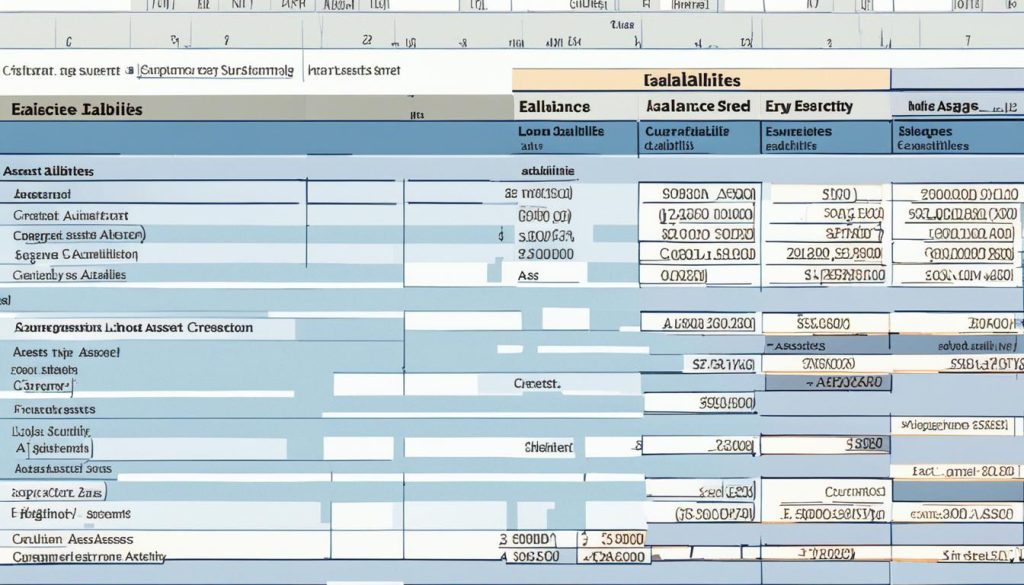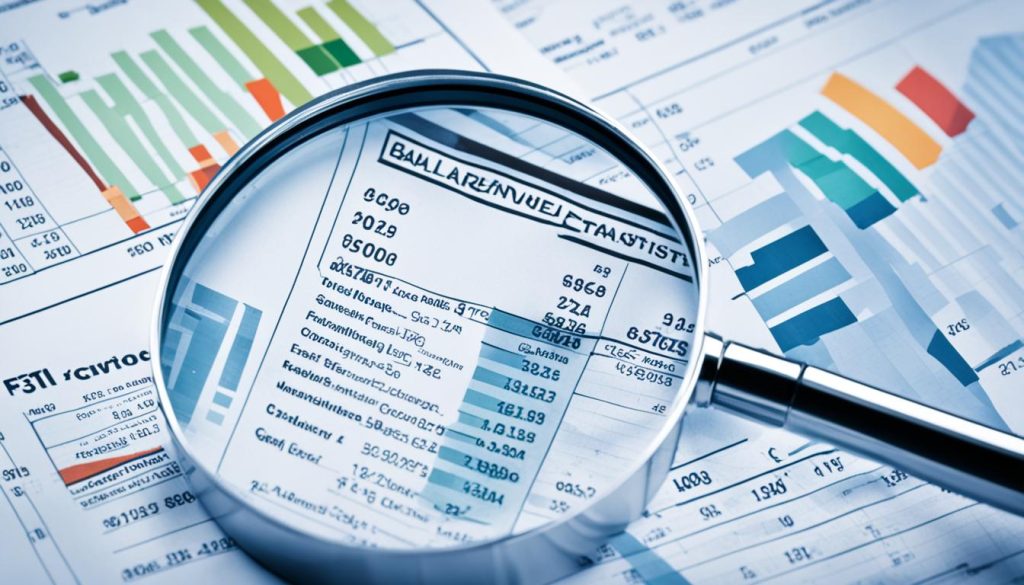Welcome to our comprehensive guide on how to read a balance sheet. In this article, we will provide you with valuable insights into the importance of a balance sheet, explain what it is, and guide you through the process of interpreting its data.
A balance sheet is a fundamental financial statement that provides a snapshot of a company’s financial position at a specific point in time. It is crucial for investors, creditors, and business owners as it reveals the company’s assets, liabilities, and shareholders’ equity, offering a clear overview of its financial health.
By understanding how to read a balance sheet, you gain the ability to make informed decisions regarding investments, creditworthiness, and overall financial performance.
In the following sections, we will delve into the structure of a balance sheet, explain the different sections and categories it comprises, and discuss the significance of accuracy and consistency in balance sheet formats. We will also explore how you can analyze balance sheet data to gain valuable financial insights and evaluate a company’s performance. So, let’s dive into the world of balance sheets and go Beyond the Numbers.
Understanding Balance Sheets
In this section, we will delve into the components and structure of a balance sheet. Understanding how to read and interpret financial statements is crucial for gaining valuable insights into a company’s financial health and making informed business decisions. By analyzing the data presented in balance sheets, you can uncover key information about a company’s assets, liabilities, and equity.
Reading financial statements may seem daunting at first, but with the right knowledge and guidance, it becomes a valuable tool for evaluating a company’s performance and financial position. Let’s explore the different sections and categories within a balance sheet and discuss how to interpret the data they contain.
Analyzing Balance Sheet Components
A balance sheet consists of three main components: assets, liabilities, and equity. Each component provides important information about a company’s financial standing. Let’s take a closer look at each of these components:
- Assets: Assets are the resources owned by a company that has economic value. They can be tangible or intangible and include items such as cash, accounts receivable, inventory, property, and equipment. By understanding the composition and value of a company’s assets, you can evaluate its ability to generate future cash flows and assess its financial stability.
- Liabilities: Liabilities represent a company’s obligations or debts. They can include loans, accounts payable, accrued expenses, and other financial obligations. Analyzing a company’s liabilities helps assess its ability to meet its financial obligations and its overall leverage.
- Equity: Equity represents the residual interest in the company’s assets after deducting its liabilities. It encompasses the owner’s investment and accumulated earnings. Analyzing equity provides insights into the ownership structure and financial solvency of a company.
By examining the relationship between assets, liabilities, and equity, you can gauge the financial health and stability of a company. This analysis allows you to determine if a company has sufficient assets to cover its liabilities and assess its overall financial performance.
Importance of Balance Sheet Format
The format and presentation of a balance sheet are essential for accurate analysis and comparison. A consistent balance sheet format ensures that financial data is presented in a standardized manner, making it easier to compare the financial performance of different companies or track the performance of a single company over time.
Here is a sample balance sheet format:
| Assets | Liabilities | Equity |
|---|---|---|
| Current Assets | Current Liabilities | Shareholder’s Equity |
| Fixed Assets | Long-term Liabilities | Retained Earnings |
| Other Assets |
By familiarizing yourself with the balance sheet format and understanding the different sections and categories, you can easily locate specific information and gain valuable insights into a company’s financial health and performance.

Now that we have explored the components and structure of a balance sheet, let’s move on to the next section, where we will focus on interpreting the data presented in balance sheets to gain valuable financial insights.
Interpreting Balance Sheet Data for Financial Insights
In this section, we will guide you through the process of analyzing balance sheet data to gain valuable financial insights. By conducting a thorough financial statement analysis and performing financial ratio analysis, you can uncover crucial information about a company’s financial health and performance.
Financial Statement Analysis
Financial statement analysis involves examining a company’s balance sheet, income statement, and cash flow statement to evaluate its financial position and performance. It helps you understand the company’s profitability, liquidity, solvency, and efficiency.
When interpreting balance sheet data, you should pay attention to various key metrics such as:
- Liquidity Ratios: These ratios assess a company’s ability to meet short-term obligations. They include the current ratio, quick ratio, and cash ratio.
- Solvency Ratios: Solvency ratios measure a company’s ability to meet long-term debts. Key solvency ratios include debt-to-equity ratio, debt ratio, and interest coverage ratio.
- Profitability Ratios: Profitability ratios assess the company’s ability to generate profits. Examples include gross profit margin, net profit margin, return on assets, and return on equity.
- Efficiency Ratios: Efficiency ratios evaluate how effectively a company utilizes its assets and manages its liabilities. Inventory turnover ratio, accounts receivable turnover ratio, and accounts payable turnover ratio are some examples of efficiency ratios.
Financial Ratio Analysis
Financial ratio analysis involves calculating and comparing various financial ratios using the data from the balance sheet. These ratios provide insights into the company’s performance, strengths, and weaknesses.
Here is a table showcasing some commonly used financial ratios calculated from balance sheet data:
| Financial Ratio | Formula | Interpretation |
|---|---|---|
| Current Ratio | Current Assets / Current Liabilities | Measures short-term liquidity |
| Debt-to-Equity Ratio | Total Debt / Shareholder’s Equity | Evaluates financial leverage and risk |
| Return on Assets | Net Income / Total Assets | Assesses profitability relative to assets |
| Inventory Turnover Ratio | Cost of Goods Sold / Average Inventory | Measures efficiency in managing inventory |
By analyzing these financial ratios and comparing them with industry benchmarks or historical data, you can gain valuable insights into a company’s financial performance, strengths, and areas for improvement.
Image:

How to Read a Balance Sheet?
In this section, we will delve into practical examples and case studies to demonstrate how to effectively interpret and analyze company accounts. By examining real-world financial reports and balance sheet examples, you will gain the necessary skills to read these essential documents with confidence and precision. Let’s explore the step-by-step process of understanding and utilizing the information found in company accounts.
When reviewing company accounts, it is crucial to analyze the financial reports to gain meaningful insights into a company’s financial health and performance. By examining balance sheet examples and other financial statements, you can identify key trends, evaluate risks, and make informed decisions about investments or partnerships.
To illustrate the process of reading company accounts, we will provide a detailed case study that showcases how to interpret various financial reports, including balance sheets. This hands-on approach will help you develop a solid foundation for analyzing company accounts and understanding their implications for business decisions.
| Company | Revenue | Expenses | Net Income |
|---|---|---|---|
| ABC Corporation | £2,500,000 | £1,800,000 | £700,000 |
| XYZ Enterprises | £4,000,000 | £3,200,000 | £800,000 |
| 123 Ltd | £1,200,000 | £900,000 | £300,000 |
Table: Financial Performance of Selected Companies
In the table above, we compare the financial performance of three different companies. By analyzing their revenues, expenses, and net income, we can evaluate their profitability and financial stability. This is just a simplified example of how financial data can be presented in a company’s accounts.
By studying the case study and analyzing the balance sheet example, you will gain practical insights into the process of reading and interpreting company accounts. This knowledge will equip you with the skills to make informed financial decisions and assess the financial health of potential business partners or investment opportunities.

Analyzing the Balance Sheet Example
As seen in the balance sheet example above, it is important to consider various components such as assets, liabilities, and equity to comprehensively evaluate a company’s financial position. By examining the interplay between these elements, you can make informed judgments about a company’s solvency, liquidity, and overall financial stability.
Throughout the case study, we will guide you through the process of analyzing different sections of the balance sheet and highlight key insights to help you effectively interpret company accounts. By the end of this section, you will have a solid understanding of how to read and analyze company accounts, empowering you to make informed financial decisions.
Conclusion
In conclusion, understanding how to read a balance sheet is essential for making informed financial decisions. Throughout this guide, we have explored the importance of balance sheets and provided a comprehensive overview of their structure and components.
To further enhance your knowledge, there are additional resources available to help you create balance sheets and access examples. Whether you need to learn how to make a balance sheet, read a balance sheet in PDF format, or understand the specific requirements for balance sheets in the United Kingdom, including Companies House regulations, these resources will provide valuable guidance.
By mastering the skill of reading balance sheets, you can gain valuable insights into a company’s financial health and performance. This knowledge empowers you to assess investment opportunities, evaluate the financial stability of potential business partners, and make strategic decisions that drive long-term success.
FAQs
What is a balance sheet?
A balance sheet is a financial statement that provides a snapshot of a company’s financial position at a specific point in time. It shows the company’s assets, liabilities, and shareholders’ equity, enabling stakeholders to assess its financial health and stability.
What is the importance of balance sheet format?
The balance sheet format is important because it ensures consistency and comparability in financial reporting. It allows stakeholders to easily identify and analyze different sections and categories, facilitating accurate interpretation of the company’s financial standing. Uniformity in balance sheet format also supports regulatory compliance, making it easier to meet legal and accounting requirements.
How can balance sheet data be interpreted for financial insights?
Balance sheet data can be interpreted by calculating and analyzing financial ratios, such as the liquidity ratio, profitability ratio, and solvency ratio. These ratios provide insights into a company’s liquidity, profitability, and financial stability. By comparing these ratios to industry benchmarks or historical data, stakeholders can assess the company’s performance and make informed decisions.
Can you provide examples of reading and analyzing company accounts?
Yes, in our comprehensive guide, we provide practical examples and case studies to help you understand how to read and analyze company accounts. These examples illustrate the step-by-step process of interpreting financial reports and balance sheets, allowing you to apply the knowledge gained in real-world scenarios.
Are there any additional resources available for creating balance sheets or understanding specific requirements in the UK?
Absolutely! In our conclusion section, we provide additional resources and guidance on creating balance sheets, accessing balance sheet examples, and understanding specific requirements for balance sheets in the United Kingdom, including regulations set by Companies House. These resources will further support your understanding and application of balance sheet analysis.





